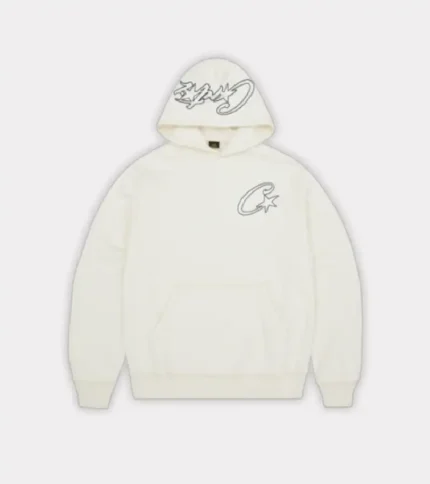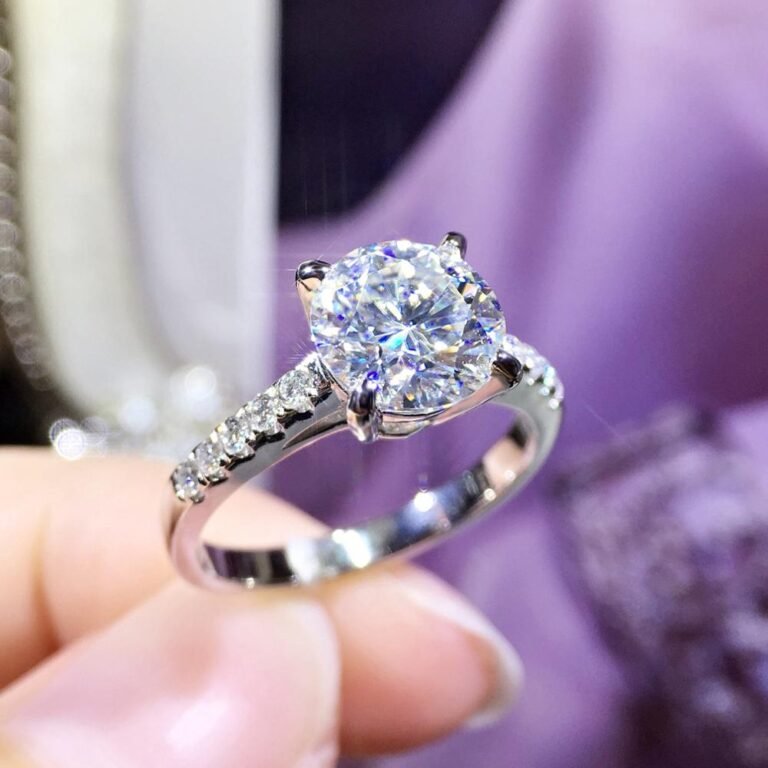The Influence of Comme des Garçons on Modern Fashion
Comme des Garçons, the brainchild of Japanese designer Rei Kawakubo, has had a profound and lasting impact on modern fashion since its inception in 1969. Known for its avant-garde approach, Comme des Garçons has challenged traditional fashion norms, embracing the unconventional and often rejecting mainstream definitions of beauty and gender. The brand’s signature deconstructed silhouettes, asymmetry, and use of non-traditional fabrics have inspired designers and fashion lovers around the world, pushing the boundaries of what fashion can be. Unlike many other luxury brands, Comme des Garçons has remained fiercely independent in its design philosophy, never conforming to seasonal trends or catering to the demands of mass-market fashion. Instead, it has cultivated a distinct, rebellious aesthetic that questions the very nature of clothing and its relationship to the body. This article explores the many ways in which Comme des Garçons has influenced modern fashion, from high-end runways to streetwear and the rise of gender-fluid fashion, and how its radical approach continues to shape the industry today.
The Visionary Behind the Brand:
To understand the influence of Comme des Garçons on modern fashion, one must first understand the genius of its founder, Comme des Garçons Site Officiel Rei Kawakubo. Born in Tokyo in 1942, Kawakubo studied fine arts and literature before entering the world of fashion. Her background in the arts deeply influenced her design philosophy, which often treats clothing as wearable art rather than mere garments. Kawakubo’s early work in the fashion industry was marked by her refusal to adhere to the traditional notions of Western beauty and form-fitting silhouettes. Instead, she created clothes that were often oversized, asymmetrical, and intentionally imperfect. In 1981, Comme des Garçons made its debut in Paris, and Kawakubo’s designs immediately caused a stir. The all-black collection, with its loose, shapeless garments, was a stark contrast to the body-conscious fashions of the time, and critics were quick to label it as “anti-fashion.” But for Kawakubo, the goal was never to create “anti-fashion”; it was to redefine fashion altogether. Her radical approach questioned the purpose of clothing, the relationship between body and garment, and the gendered nature of fashion. By doing so, she laid the groundwork for the brand’s enduring influence on the fashion industry.
Deconstruction as a Fashion Philosophy:
One of the most significant contributions that Comme des Garçons has made to modern fashion is the concept of deconstruction. Rei Kawakubo’s designs often deconstruct the very idea of what a garment should be, leaving unfinished hems, exposing inner workings, or rearranging traditional silhouettes in ways that defy expectations. This approach has influenced countless designers and has become a staple of modern fashion. Deconstruction in fashion is not just about the physical manipulation of garments but also about breaking down societal expectations regarding clothing. For example, Kawakubo often plays with the traditional notions of gendered fashion, creating pieces that blur the lines between masculine and feminine. By deconstructing gendered clothing, she challenges the idea that certain garments are inherently tied to a specific gender, a concept that has become increasingly relevant in today’s discussions about gender fluidity and non-binary fashion. Furthermore, deconstruction allows for a focus on the process of garment creation. By exposing seams, raw edges, and other construction elements, Kawakubo emphasizes the artistry and labor behind fashion. This has influenced many designers who now incorporate deconstruction into their own work as a way of challenging the polished, mass-produced look of mainstream fashion.
The Impact on Gender-Fluid Fashion:
Comme des Garçons has been a pioneer in promoting gender-neutral and gender-fluid fashion long before it became a mainstream movement. Kawakubo’s designs often blur the lines between menswear and womenswear, offering silhouettes that can be worn by anyone, regardless of gender. This has had a profound influence on modern fashion, where we now see an increasing number of designers embracing gender-neutral collections. Kawakubo’s approach to gender-neutral fashion is not just about creating unisex clothing but about questioning the very idea of gendered clothing in the first place. By rejecting traditional gender norms, she creates a space where individuals are free to express themselves without the constraints of societal expectations. This has resonated particularly with younger generations who are increasingly rejecting binary notions of gender. The influence of Comme des Garçons on gender-fluid fashion is evident in the rise of designers who are now creating collections that cater to non-binary and gender-fluid individuals. Brands such as Telfar, Palomo Spain, and Eckhaus Latta are just a few examples of designers who have embraced the idea of fashion as a tool for self-expression, free from the constraints of gender.
The Avant-Garde Aesthetic and Its Legacy:
Comme des Garçons is synonymous with avant-garde fashion. Rei Kawakubo’s designs have always pushed the boundaries of what is considered wearable, often blurring the line between fashion and art. This avant-garde approach has inspired countless designers who seek to challenge the status quo and explore the more conceptual side of fashion. The avant-garde aesthetic of Comme des Garçons is characterized by its rejection of traditional beauty standards and its embrace of imperfection. Kawakubo often uses unconventional materials, such as plastic, metal, and rubber, in her designs, creating pieces that are as much sculptures as they are garments. This has paved the way for a new generation of designers who are unafraid to experiment with materials and push the boundaries of what fashion can be. Additionally, Comme des Garçons has had a significant impact on the way fashion shows are conceptualized. Kawakubo’s runway presentations are often theatrical, with models walking in unusual ways or wearing garments that obscure their bodies. This has influenced other designers to think more creatively about how they present their collections, turning fashion shows into performance art rather than mere displays of clothing. Designers such as Thom Browne, Rick Owens, and Gareth Pugh are known for their avant-garde presentations, a direct influence of the legacy Kawakubo has established.
The Rise of Streetwear and Comme des Garçons’ Influence:
Comme des Garçons has had a notable influence on the rise of streetwear, a trend that has dominated modern fashion for the past decade. While Kawakubo’s designs are often associated with high fashion, her approach to deconstruction, gender neutrality, and individuality has resonated with streetwear designers who seek to challenge traditional fashion norms. Streetwear, with its emphasis on comfort, individuality, and rebellion, shares many of the same values that have defined Comme des Garçons since its inception. In particular, Comme des Garçons’ sub-label, Comme des Garçons Play, has become a favorite among streetwear enthusiasts. The heart logo, designed by Polish artist Filip Pagowski, has become a symbol of cool, minimalist style that resonates with the streetwear community. Collaborations with brands such as Nike and Converse have further cemented Comme des Garçons’ place in the streetwear world, with the brand bringing its avant-garde sensibilities to more casual, everyday pieces. The influence of Comme des Garçons on streetwear can also be seen in the way modern streetwear brands approach design. Labels like Off-White, Vetements, and Fear of God have adopted elements of deconstruction, oversized silhouettes, and a gender-fluid approach to their collections, all of which can be traced back to the influence of Rei Kawakubo and Comme des Garçons.
The Influence on High Fashion Designers:
It is impossible to discuss the influence of Comme des Garçons without mentioning the profound effect it has had on high fashion designers around the world. Rei Kawakubo’s fearless approach to design has inspired many of today’s most celebrated designers, who have adopted her avant-garde techniques and integrated them into their own work. Designers such as Martin Margiela, Alexander McQueen, and Yohji Yamamoto have all drawn inspiration from Comme des Garçons in their collections, particularly in their use of deconstruction and unconventional silhouettes. Margiela, for example, is known for his use of deconstruction, often exposing the inner workings of garments and subverting traditional fashion norms in a way that is reminiscent of Kawakubo’s early work. McQueen, who was known for his theatrical runway shows and avant-garde designs, also cited Kawakubo as a major influence on his work. The lasting influence of Comme des Garçons on high fashion is evident in the way modern designers continue to push boundaries and challenge conventional ideas of beauty and clothing. The fashion industry today is more open to experimentation and conceptual design than ever before, thanks in large part to the path that Rei Kawakubo paved with Comme des Garçons.
Comme des Garçons and the Art of Fashion Collaboration:
Comme des Garçons has also made a significant impact on the fashion world through its collaborations with other designers, artists, and brands. While fashion collaborations are now commonplace, Kawakubo was one of the pioneers of this trend, partnering with a diverse range of artists and brands to create unique, boundary-pushing collections. One of the most notable collaborations in recent years is Comme des Garçons’ partnership with Louis Vuitton. In 2008, Kawakubo designed a series of handbags for the luxury brand, bringing her avant-garde sensibilities to a more traditional fashion house. This collaboration was groundbreaking because it combined the high fashion, luxury appeal of Louis Vuitton with the experimental nature of Comme des Garçons, creating a fusion of two seemingly opposing fashion philosophies. Kawakubo’s collaboration with Nike is another example of how Comme des Garçons has influenced the world of fashion collaborations. The collaboration resulted in a series of sneakers that combined Nike’s athletic aesthetic with Comme des Garçons’ avant-garde design elements, such as asymmetrical lacing and deconstructed fabrics. This partnership bridged the gap between high fashion and streetwear, a trend that continues to define the fashion industry today.






